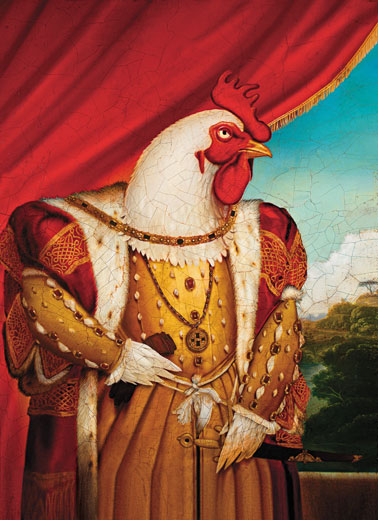How the Chicken Conquered the World
Source: smithsonianmag.com

The chickens that saved Western civilization were discovered, according to legend, by the side of a road in Greece in the first decade of the fifth century B.C. The Athenian general Themistocles, on his way to confront the invading Persian forces, stopped to watch two cocks fighting and summoned his troops, saying: “Behold, these do not fight for their household gods, for the monuments of their ancestors, for glory, for liberty or the safety of their children, but only because one will not give way to the other.” The tale does not describe what happened to the loser, nor explain why the soldiers found this display of instinctive aggression inspirational rather than pointless and depressing. But history records that the Greeks, thus heartened, went on to repel the invaders, preserving the civilization that today honors those same creatures by breading, frying and dipping them into one’s choice of sauce. The descendants of those roosters might well think—if they were capable of such profound thought—that their ancient forebears have a lot to answer for.
Chicken is the ubiquitous food of our era, crossing multiple cultural boundaries with ease. With its mild taste and uniform texture, chicken presents an intriguingly blank canvas for the flavor palette of almost any cuisine. A generation of Britons is coming of age in the belief that chicken tikka masala is the national dish, and the same thing is happening in China with Kentucky Fried Chicken. Long after the time when most families had a few hens running around the yard that could be grabbed and turned into dinner, chicken remains a nostalgic, evocative dish for most Americans. When author Jack Canfield was looking for a metaphor for psychological comfort, he didn’t call it “Clam Chowder for the Soul.”
How did the chicken achieve such cultural and culinary dominance? It is all the more surprising in light of the belief by many archaeologists that chickens were first domesticated not for eating but for cockfighting.
[...]
Read the full article at: smithsonianmag.com
Image: Source - SmithsonianMag.com, Tim O’Brien






















